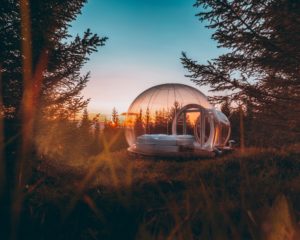Top 10 Best Waterfalls in Iceland
By Michael Chapman
Discover the land of ice and fire's most scenic cascades!
Top 10 Best Waterfalls in Iceland
By Michael Chapman
Discover the land of ice and fire's most scenic cascades!
Given that approximately 11% of Iceland’s landmass is covered by glacial ice, one would not be chastised for wondering where all that meltwater eventually goes. The answer is found tricking, or in some cases, rushing by way of river towards the island’s black sand coastlines.
Crossing snake-like across rugged countryside, these rivers often arrive upon steep ledges and cliffsides, culminating in a feature that has long put Icelandic nature on the map; waterfalls! Iceland boasts a diverse number of waterfalls; some large, some small, but all are worthy of appreciation for anyone planning a visit.
Below, we’ve listed what we consider to be the Top 10 waterfalls in Iceland, starting with one found not far from both the capital, Reykjavik, and the popular sightseeing route, the Golden Circle.
We speak, of course, of Goðafoss, Waterfall of the Gods. Let’s begin there.
10. Goðafoss
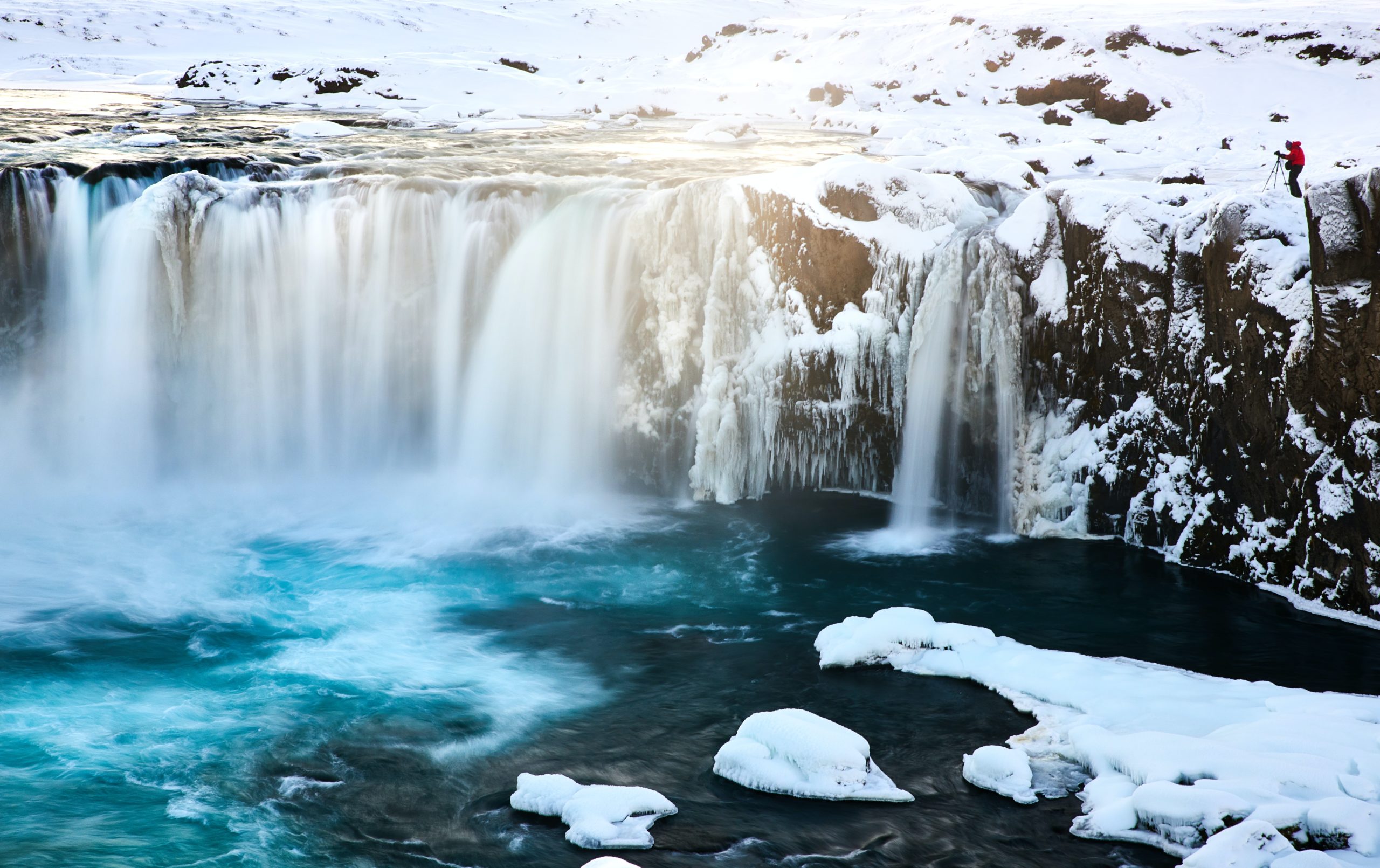
Goðafoss’ nickname, Waterfall of the Gods, has its origins in the cold and tumultuous years that followed the island’s mass-conversion from Norse Paganism to Christianity. Well, that is according to the legends…
Upon adopting this new ideological outlook, the proud Chieftains of various clans across Iceland culminated at Goðafoss, where they threw formerly revered pagan idols into the water. Today, when looking up the site’s frothing currents, with the nearby cascade roaring in your ears, it’s easy to wonder if such treasures still lie somewhere below the water surface.
Goðafoss is one of the many waterfalls found on the Skjálfandafljót river. Visitors on site will quickly note the waterfall’s width, 30 metres, which is somewhat more impressive than its 12-metre drop. Regardless, the falls’ shape is particularly distinctive, making it more than worthy of your photographs.
The waterfall is surrounded by the gnarled lava fields left behind by the Trölladyngja volcano. Such scenery makes for pleasant surroundings when walking by the river. With that in mind, you won’t want to miss visiting this attraction the next time you partake in West Iceland’s famous Golden Circle sightseeing route.
9. Seljalandsfoss
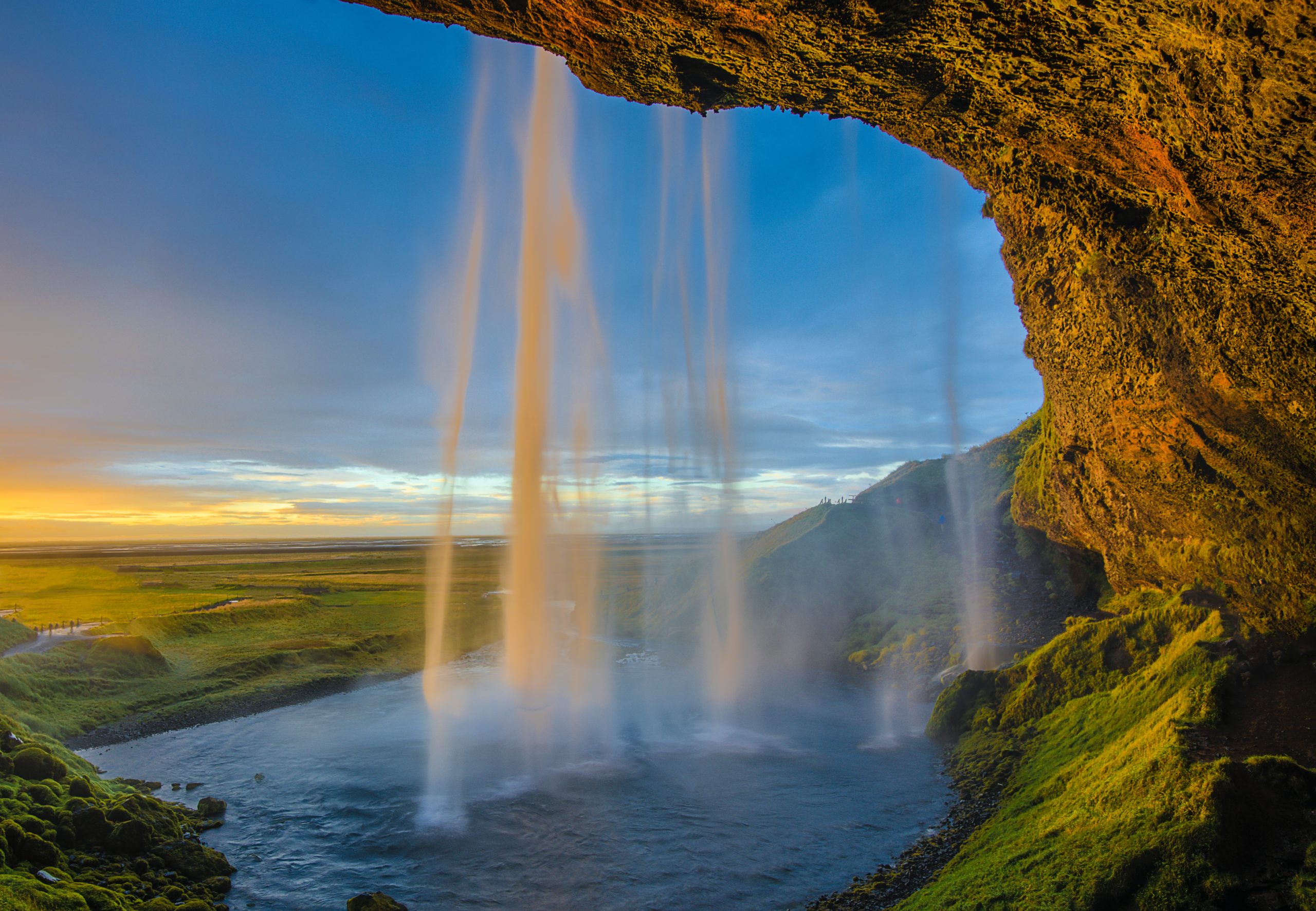
Recognisable the world-over thanks to its propensity for appearing in local tourism campaigns, Seljalandsfoss waterfall is one of the South Coast’s star attractions. As a narrow cascade that drops sixty metres over a moss-laden cliffside, this stunning site is rightfully considered one of the most beautiful waterfalls in the country.
A walking path leads behind the water, which allows for a new perspective of the site. As is to be expected, this has become a popular photography spot, perfect for capturing the rays of the Midnight Sun as they shine through the falling water. However, be aware that the path often becomes covered with ice during the winter, making it potentially dangerous for those in the wrong footwear.
Another reason for its immense popularity lies in its easy accessibility from the Ring Road. Driving by, there’s no simply no way you’ll miss it. There is free parking onsite, and you’ll often find other travellers and tour groups utilising the location as a meeting spot.
PLAN YOUR JOURNEY
Travelling to Iceland?
Check our overnight tours with a driver guide that includes a one night stay in a bubble.
*Starting from ISK 59.900 per person
8. Skógafoss
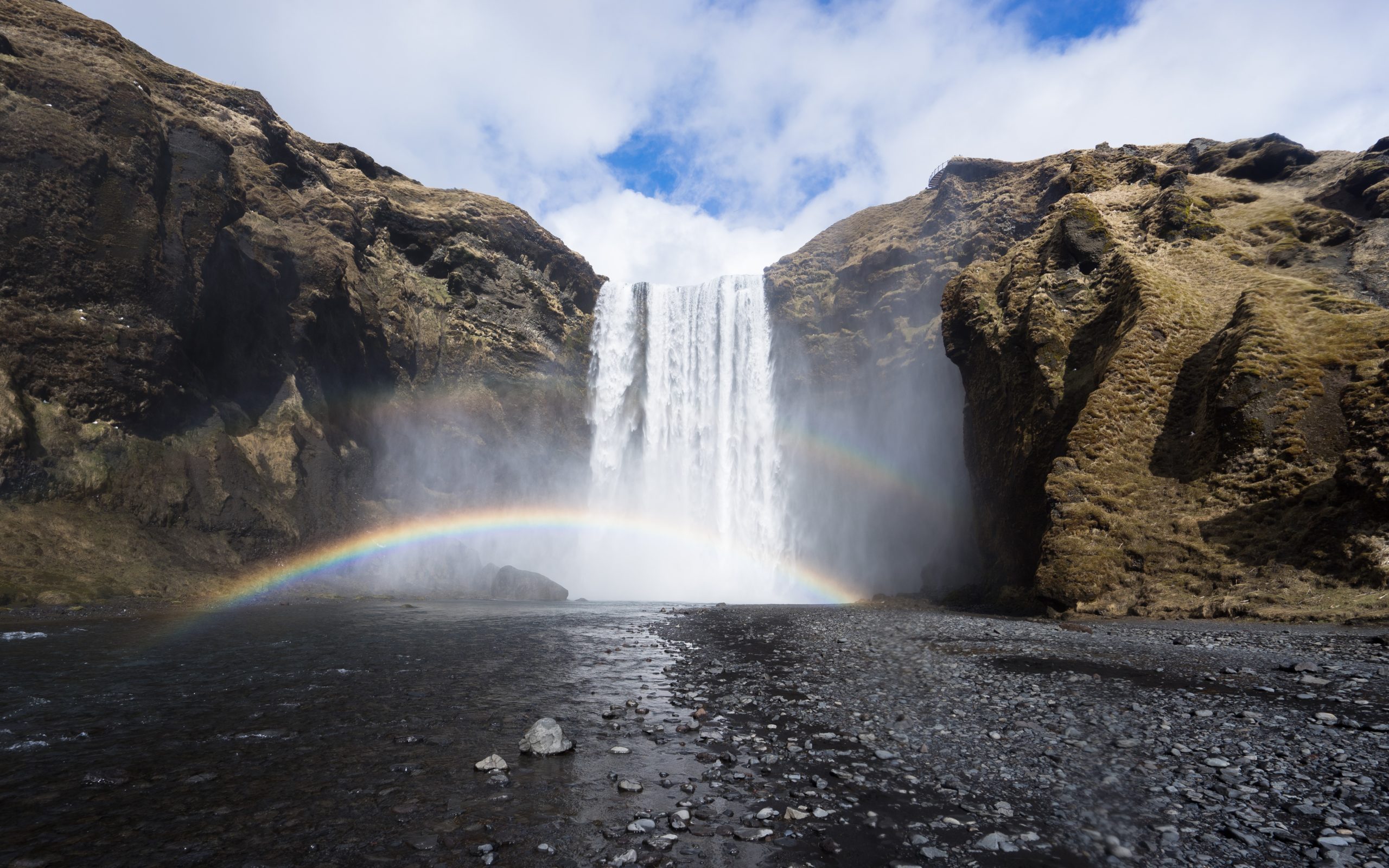
Skógafoss is also found right alongside the Ring Road and can be seen heading a short way east from Seljalandfoss. You will immediately notice the waterfall is much broader than its neighbour, creating an enormous steam plume that often catches rainbows in the summer.
According to folklore, a mysterious treasure is said to sit behind the curtain of cascading water. Unfortunately, the flow is so powerful that stepping behind it is an impossibility, and that’s not to mention the troll legends claim guard the treasure day-and-night.
There are two observation points from which to view Skógafoss. The first is at the base of the waterfall itself, allowing for a staggering perspective of the feature as it towers over you. While this might be the best spot to appreciate the sheer power on display here, there is no guaranteeing you will stay dry throughout the experience.
The second observation point is at the very top of the waterfall. Visitors have to ascend a winding wooden staircase that leads up the side of an ancient sea cliff, granting them access to the lip of the waterfall. Some visitors will not make the extra effort to see the waterfall from this angle, but those that do will also be blessed with beautiful views over the South Coast countryside.
7. Aldeyjarfoss
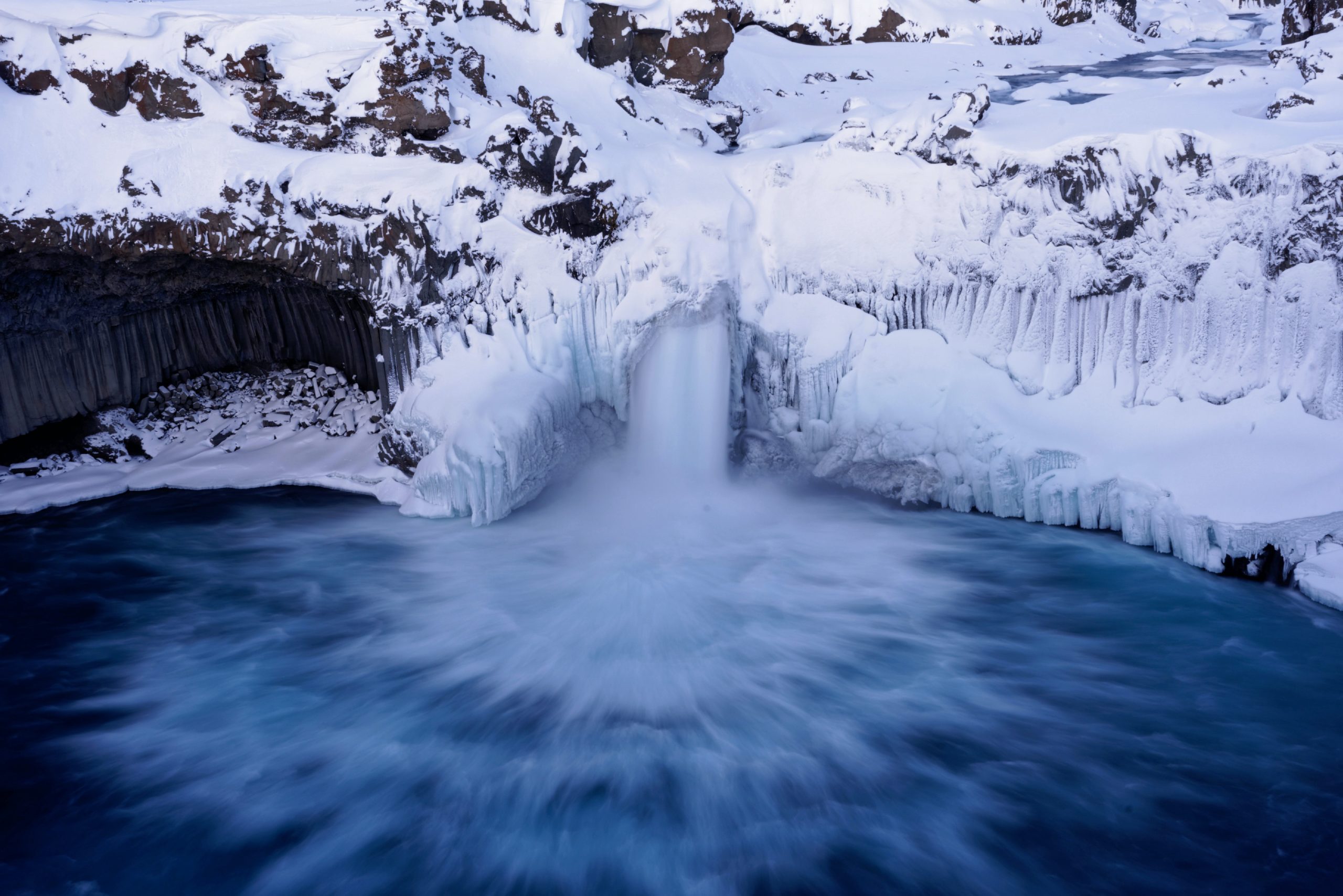
Aldeyjarfoss may not be as enormous or dramatic as its counterparts around the country. Instead, it offers alien surroundings and a photogenic pool so round that one might think it had artificially made.
Like those found at Reynisfjara beach and Skogafoss waterfall, Aldeyjarfoss and its pool are surrounded by distinctive black columns formed by historic lava flows.
Much the same as the Waterfall of the Gods, Goðafoss, Aldeyjarfoss can be found on the Skjálfandafljót river. However, it is found far north in the Icelandic highlands. Given its location, anyone staying or passing through the town of Akureyri are best placed to visit the waterfall.
To access this stunning site, you will need to divert off the Ring Road between Lake Myvatn and Akureyri, travelling down 842, then the gravel road, F26. A 4×4 vehicle is necessary considering the rough terrain en route, and visitors should only attempt to visit during the summer.
6. Háifoss
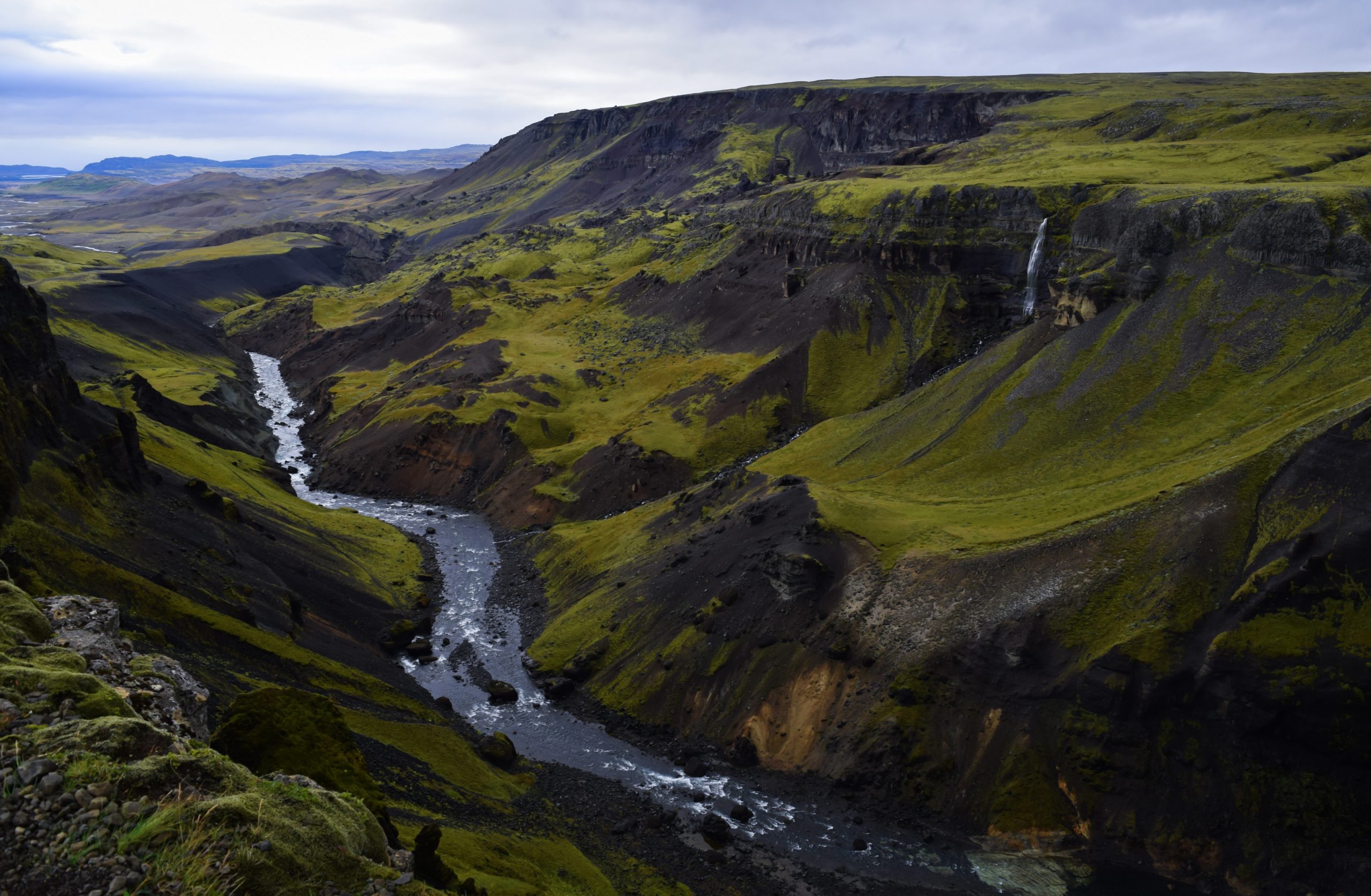
Háifoss waterfall boasts an incredible drop of 122 metres, making for a sublime subject for landscape photographers who have hiked there for that very purpose.
Right beside the waterfall is Granni, which roughly translates to ‘neighbour’. Granni is just as impressive as Háifoss, though it is best appreciated when the waterfalls are viewed alongside one another. To achieve such a perspective, visitors will hike up the cliff sides opposite the waterfalls or traverse the pebbled riverbed at the canyon basin.
Háifoss comes fourth in the tier of Iceland’s tallest waterfalls. At around 240 metres, the waterfall Morsárfoss is the tallest, though it only became visible in 2007 after the Morsárjökull glacier began to melt. Given that fact, Morsárfoss is not as easily accessed as most other waterfalls found across the country.
5. Gullfoss
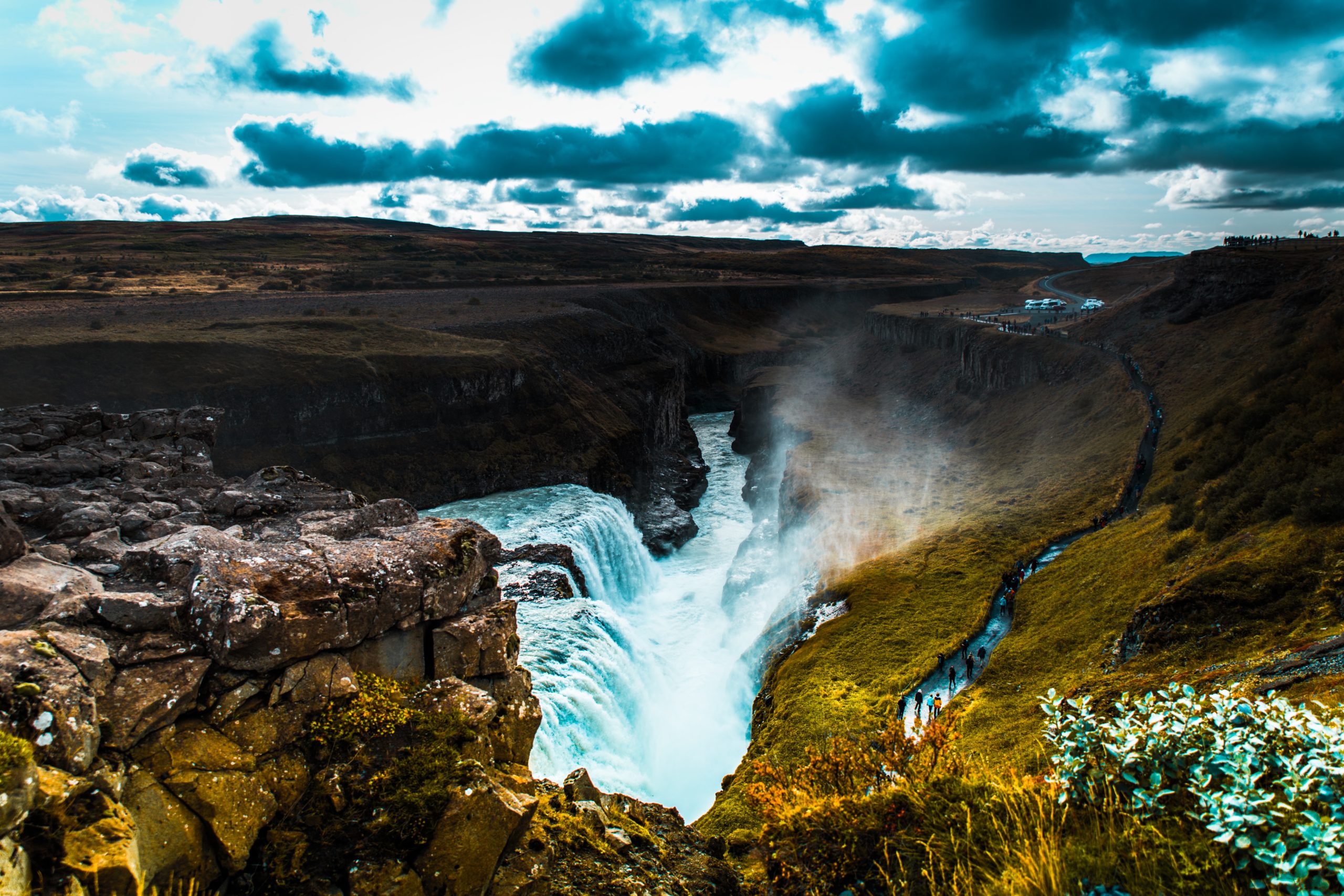
Gullfoss falls a total of 32 metres. It does so over two jagged ledges, coming to an end in the dark underbelly of the Hvítá river canyon. The waterfall’s name translates to ‘Golden Falls,’ which brings us swiftly to our next point.
Alongside Thingvellir National Park and Geysir geothermal springs, Gullfoss waterfall makes up part of the famous Golden Circle sightseeing route. It has the special accreditation of having lent its name to the trail. In that sense, some might consider Gullfoss waterfall to be the star attraction, and they wouldn’t be far wrong in their thinking.
If you are interested in witnessing these grand attractions for yourself, we advise you to check out our Golden Circle Bubble tour! Being driven from site to site by our experienced guides, you will leave the Golden Circle area with a better appreciation of this island’s nature, history and culture.
Besides that, you’ll spend the night in one of our transparent bubbles, allowing for fantastic views of the stars and Northern Lights from cosy and comfortable surroundings.
4. Glymur
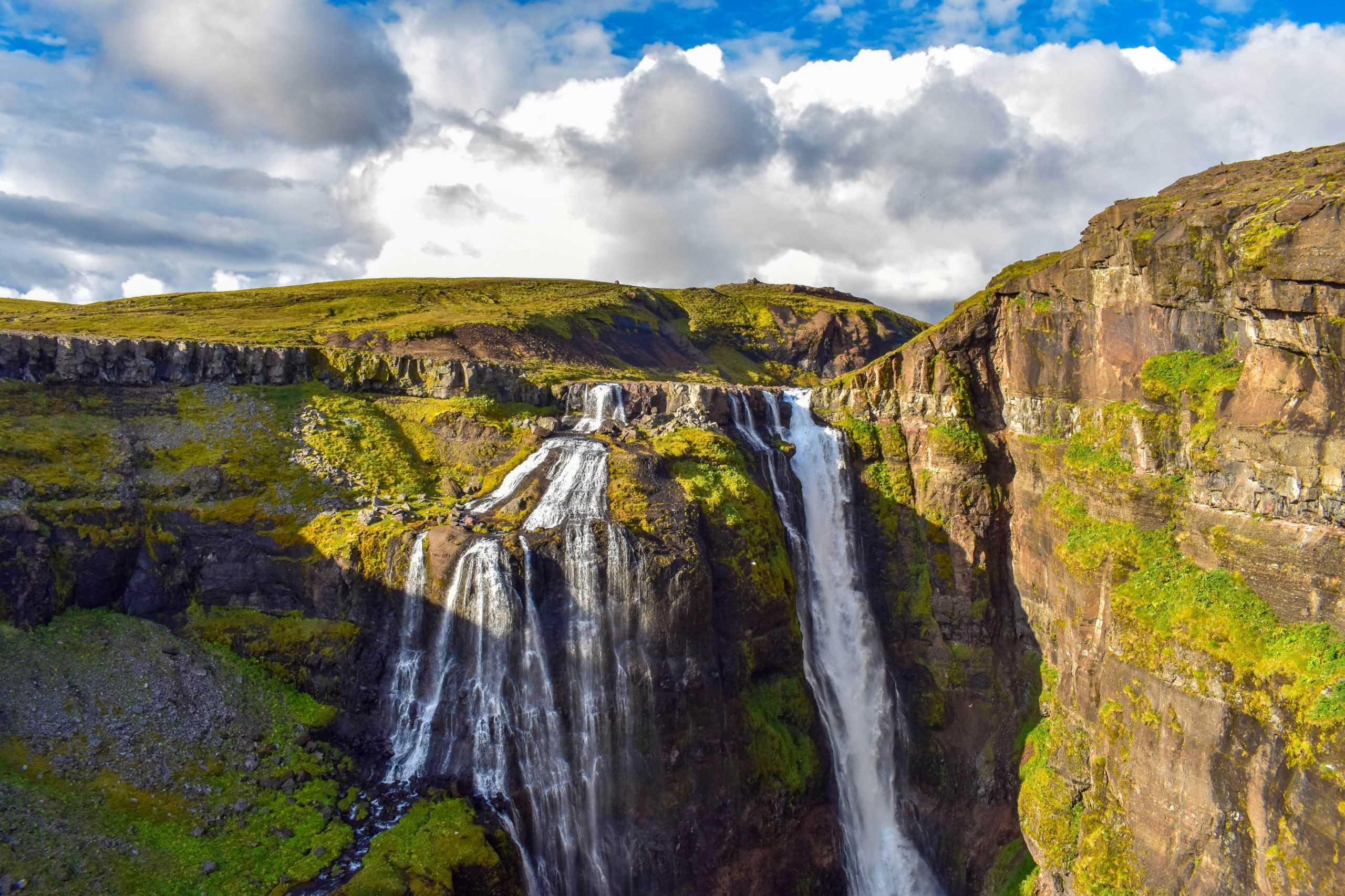
Glymur is the second-tallest waterfall in Iceland at 198 metres tall. It was once considered the tallest until the waterfall Morsárfoss (248 metres) appeared in 2007 after the Morsárjökull glacier began to melt. Given that fact, Morsárfoss is not as easily accessed as most other waterfalls found across the country.
Still, Glymur is more than worth hiking to, especially considering it is advantageously found just forty-five minutes drive from Reykjavik. Located in Hvalfjordur fjord, the entire area is lush with steep table-top hillsides, each of which promising magnificent views over the water bodies that dot the area.
The hike to Glymur is an adventure in itself, requiring visitors to cross rivers, enter caves and navigate steep mountain passes. Such a trail is thrilling at the best of times, but it is made all the better knowing that Glymur awaits as your finale.
Do note, however, that the hike is no easy feat, thus should only be undertaken by those with at least a moderate level of physical fitness. Covering approximately 4.6 miles (7.5 km), most hikers will take around 3 – 4 hours to get from the car park to the waterfall and back.
3. Svartifoss
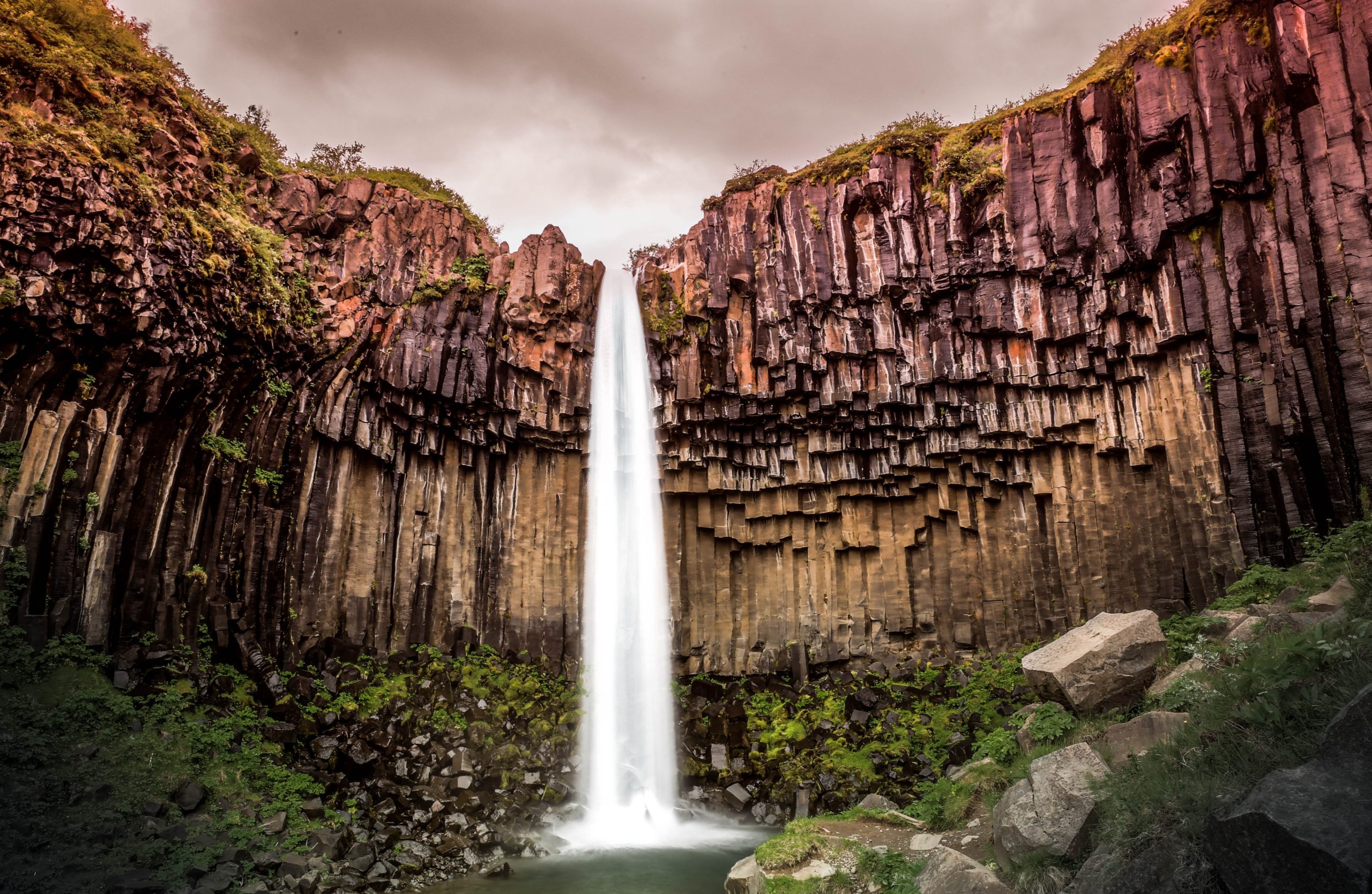
Svartifoss translates to ‘The Black Waterfall’, and anyone who stops by will find it named for seemingly obvious reasons. Behind its narrow strip of falling water, hexagonal columns stretch out like the enclaves of a haunted fortress, hanging low from the cavern ceiling, inspiring awe in anyone who looks upon them.
The basalt columns that frame Svartifoss inspired the former and prominent state architect, Gudjon Samuelsson, when designing the iconic steeple of Hallgrimskirkja Lutheran Church in Reykjavik.
The trail to Svartifoss covers around 2 kilometres, so make sure to allow yourself between one or two hours hiking if you plan on paying a visit. If you’re looking to learn more, there is a Visitor’s Centre on site ready to provide you with terrain maps, extra kit and any advice that might come in handy before setting off.
2. Dettifoss
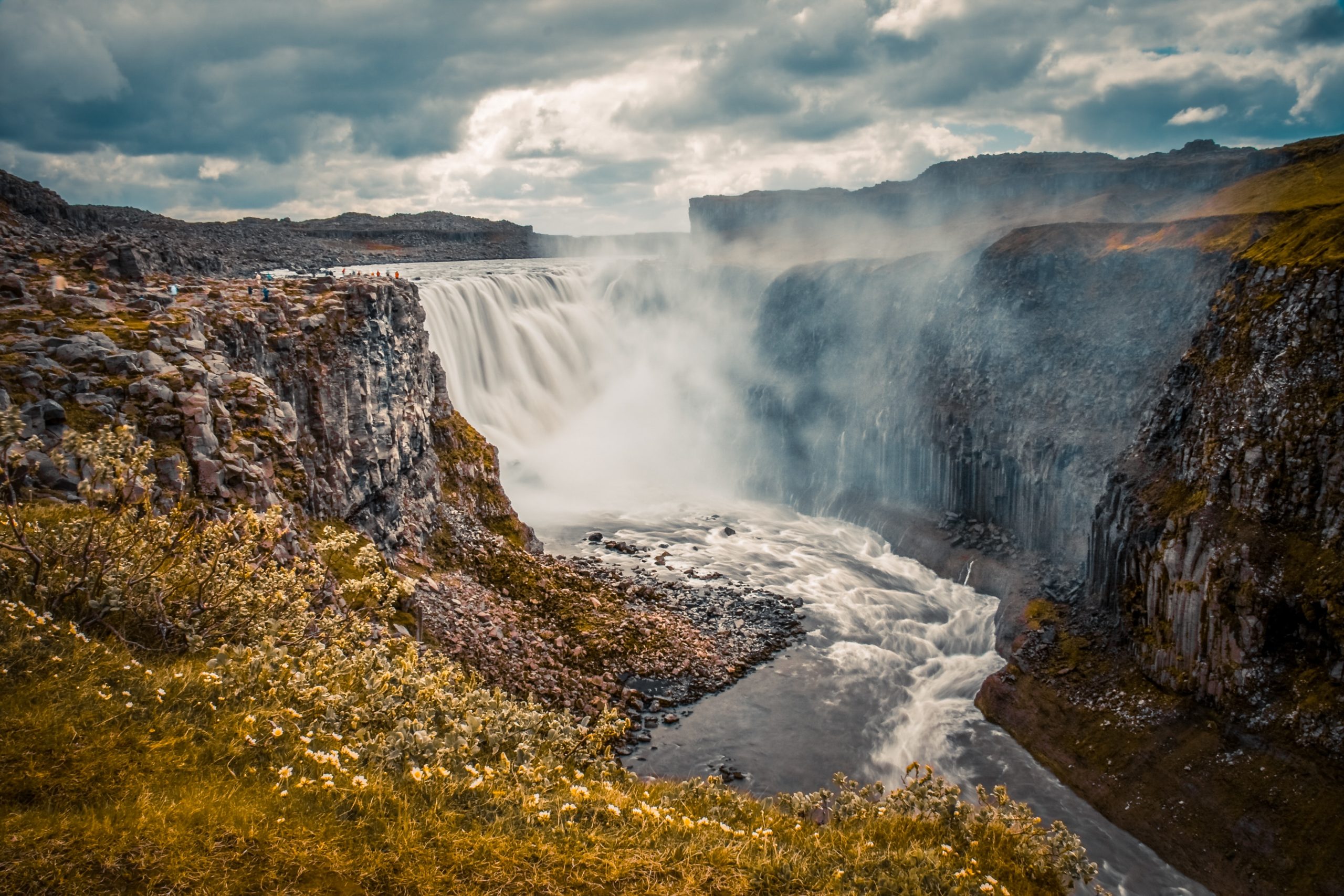
A staple attraction of Vatnajökull National Park, Dettifoss waterfall is surrounded by grey weatherbeaten rock sculptures formed over thousands of years. It makes for one of the more unique landscapes in Iceland, and helps to build suspense and excitement on approach to the falls.
Wondering the rugged trail that leads from the car park to the waterfall, you will see its misty plume long before glimpsing any cascading water. The roar of water, thundering from some distance, will quickly ripple over you, demonstrating the might on display. No surprises then that Dettifoss has the most powerful flow of any waterfall not just in Iceland, but the whole of Europe.
Dettifoss was introduced to audiences worldwide thanks to its use in the opening scene of Ridley Scott’s sci-fi epic ‘Prometheus’ (2012). It is clear upon arrival why the director chose this site to substitute for his intellarstaller landscape, as there are very few places on earth that one can compare it to.
1. Dynjandi
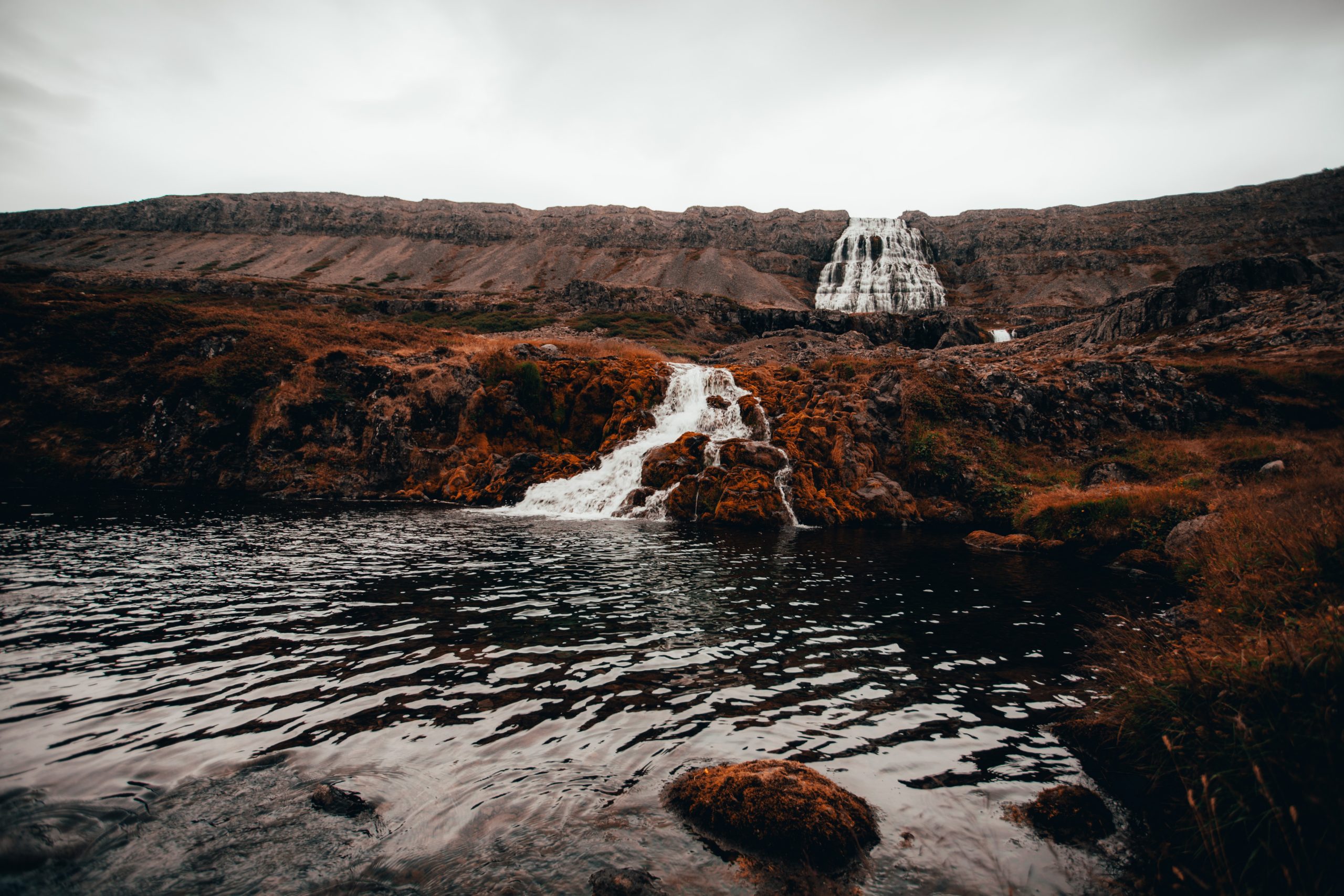
Otherwise known as Fjallfoss, Dynjandi roughly translates to “Thunderous”, which should provide you with some idea of what to expect from this magnificent waterfall in the Westfjords.
The drop’s height is around 100 metres, though guests can see several other waterfalls below Dynjandi itself. Though words like Hæstahjallafoss and Strompgljúfrafoss are often too much for the foreign tongue to tangle with, each of these waterfalls has its own name.
Dynjandi refers to a series of waterfalls rather than a single one and comprises several stages that rise upward like a wedding cake or superhero’s cloak, depending on who you ask. It is the bottom of the falls that captures the most significant attention given its generous 60-metre width.
Walking from the car park to the waterfall takes approximately fifteen minutes, a short walk through the sublime and untouched surroundings that make the Westfjords so alluring.
PLAN YOUR JOURNEY
Travelling to Iceland?
Check our overnight tours with a driver guide that includes a one night stay in a bubble.
*Starting from ISK 59.900 per person

